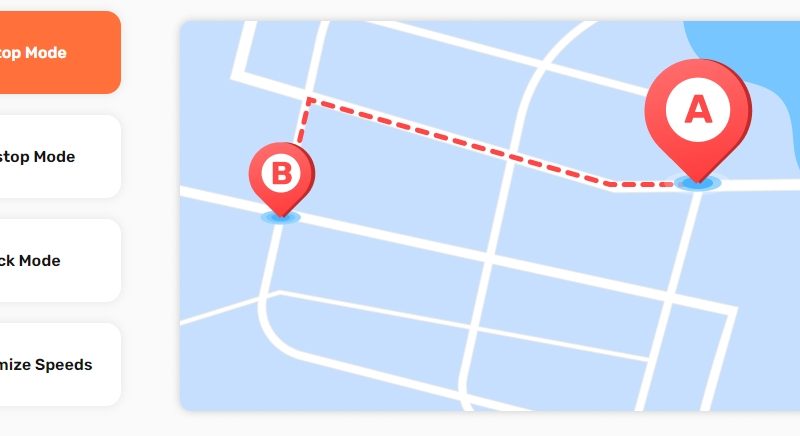13 Tips On How To Write A Technical Blog

Enter the tech blogging world but don’t know how to write a Technical blog? Technical blogging is an entirely different genre to other blogging types. One has to be great at researching technical subjects and then creating an essay on the same subject. It may be tedious to write a technical blog but this hard work will distinguish you from all the other bloggers out there and learn more from Cheetah papers for more tricks to write an effective essay for your technical blog.

If you want to write technical posts on your blog, you need to read this article to know all the tricks of the trade. Here are some tips that can help you create a better essay for a technical blog.
- Know Your Audience: First, you need to know the audience you’re writing the blog for. While this is significant in building blogs of all kinds, it is particularly important when it comes to technical blogs. You need to know who’ll be reading your blog and then create an essay accordingly.
You’ll be able to create the kind of essay that resonates with your audience when you know it. It will also give you an idea of how to structure your blogs, and the language and tone level you should use.
The best way to do that is to create people for your audience. You should keep them in mind when you’re writing a blog post when you’ve developed such personas. This will ease the writing of a technical blog and help you communicate with your audience too.
The advantage of understanding your target is that their SEO efforts help. You can use specific keywords because you know your target audience which can help you reach the top of the search engine rankings. You are going to create an essay that your target audience is looking for, and that is the main SEO concept.
- Brainstorm Ideas: When you develop client personas, the next step is to pick a subject for which you will create an essay. This is one of the most significant and demanding stages of writing a professional blog. You need to find a subject that will interest your target audience, and it can be a daunting task to do.
If you’re not sure what you should write about, then looking back at your target audience is the best way to. What is it they want to read? Is there any question they would like answers to? Would you think they’ll want to hear more about something trending?
You should be having plenty of topics for your target audience when you go through each of these questions. Another method that has been tried and tested to come up with great technical blog topics is using Google Trends. You should find out what the people on any given topic are thinking about. Some common themes you can try include A step-by-step guide to any technical topic A numbered list An in-depth review
- Set Your Goals: Now that both you and the target audience have a subject in mind, the next step is to decide the goals you want to accomplish with this blog. Consider them unique to your goals. It will allow you to focus on one main concept.
Your goals can be anything like giving your audience in-depth knowledge of a technical subject, or stating facts they hadn’t known before, and so on. Keep focused on attaining whatever goals you determine for yourself.
Once you’ve settled on the goals that you’d like to follow, let go of anything that doesn’t help achieve your goal. Don’t put all you can find into the post as it can get boring and many people aren’t interested in reading long posts.
- Study About the Theme: Now that you’ve got a great theme and set your goals, the next thing is to dig deep into the subject and explore it as much as possible. If you have the time and resources you can perform secondary research using the Internet or conduct primary research.
Use all the resources you have, and take note of all that you come across. If the information sounds important and you think it can help your audience better understand the topic then write it down and add it to your blog where it fits perfectly.
- Blog layout: Your professional blog post has to be well-structured. It should have a beginning, a halfway point, and an end. This will keep your readers on track, and keep your blog informed.
The introduction is an essential part of any blog post. The first paragraph will encourage the reader to continue and read his blog. Hence the presentation is meant to be fine. It should tell the audience what that blog will accomplish. Don’t give away in the introduction also the entire blog post. Save the best part for the end of the middle, but try to intrigue them to such an extent with the introduction that they are forced to read further.
The middle part of the blog is where you’ll give readers all you promised in the introduction. Place as much information as is appropriate, and use lists and headings to keep things interesting. It’s also very important to style the blog to make it aesthetically pleasing.
The conclusion is where you sum up all that you read in the blog post. Tell them about your views or conclusions, and finish the blog post with a clear call for action.
- Keep It Simple: A lot of professional bloggers are making the error of making the blog too hard to read and understand. When it comes to blogs the key to success is to keep it as simple as possible. Don’t seek to include really hard words in your posts unless you need them.
The best approach is when you’re writing your blog to find a tech-savvy high schooler. You don’t want to give them anything too difficult to comprehend and obey. It just will ruin the blog’s intent.
Using plain language and some technical jargon, if needed. In a few simple examples, incorporate to let the readers understand what you are trying to convey. Don’t aggressively add tough words as it just would frustrate the writers.
- Using Appropriate Keywords: The professional blog is just as valuable as its search engine ranking. When it comes to SEO, technical blogs are no different from normal blogs. Here, you have to apply the same SEO best practices you would have used in any other blog.
You need to use specific keywords in your blog. If you aren’t sure which keywords to choose, use a keyword research tool. Make sure you always mark your technical blog with and include a long-tail keyword. Phrases with 3 or 4 words are regarded as keywords in the longtail.
Long-tail keywords rank higher than single-word keywords. For example, if people search for “how to write a technical blog” they can easily find this article. In comparison, using a common keyword such as “professional blogging” may not give us the results we predicted. Learn how to find the right long-tail keywords for your tech blogs and move up in a check the search engine rankings.
- Using examples and analogies: linking technical blogs to examples and analogies makes it much more interesting and easier to understand. That becomes particularly important when it is difficult to understand the subject itself. An example of this might help your readers better understand your point.
Analogies are similarities which enable your readers to easily and clearly understand the concepts. Yet make sure the analogies and explanations make things easier for the viewer and not more complicated. Hold things as simply as possible.
- Include Links: When you put too much detail into one page, your readers will run away. Also, a goldfish has an attention span. So, when designing your blog, you have to keep that in mind. If you have a lot of information that the readers want to learn about, then it is best to add links to sites where they can read about it if they want.
Hyperlinked text can be used to connect to related posts created by you or by others. At the end of your blog, you can also add a section of further reading and include some links there. Both of these methods may also be used in your professional posts. When it comes to blogging there are no hard and quick rules to follow.
- Formatting Is Important: As already mentioned, people today don’t have a long span of attention. In addition, they prefer blogs where information is easy and quick to obtain. Many skim through these blogs; therefore, perfect formatting is necessary.
If your technical blogs just consist of long paragraphs, drive away your target audience. So you have to add headings and subheadings to it. Add enumerated lists, bullet points, and indent sections so the readers know what matters.
Using colors to attract attention to important areas of your readership. It’s also very necessary to use white space effectively. Hold the paragraphs short, too. It lets you read the essay quickly.
- Edit Your Work: Once you’ve written and edited the message, don’t think it’s ready for publishing yet. You still have to edit and proofread it. Editing is very useful because it can help to remove small errors that you may have missed while writing the message.
It also refines editing the work and increases its readability. It’s best to ask another to help edit your blog. But ensure that it’s someone who understands blogging, your target audience and your goals.
- Publish Your Mail: It’s time to publish it when you’re confident the blog post is fine. To publish your Technical Blog you can use any platform. Before you go on, though, make sure that you run it by someone and press the Publish button. Also, check your blogs SEO scores before they are published.
- Promote Your Post: You’ve written your post, but the world knows nothing of it. You need to forward your post to your audience. It is here that the promotion of your post comes into play. Here are a few simple yet effective ways to promote your blog post in a technical way






